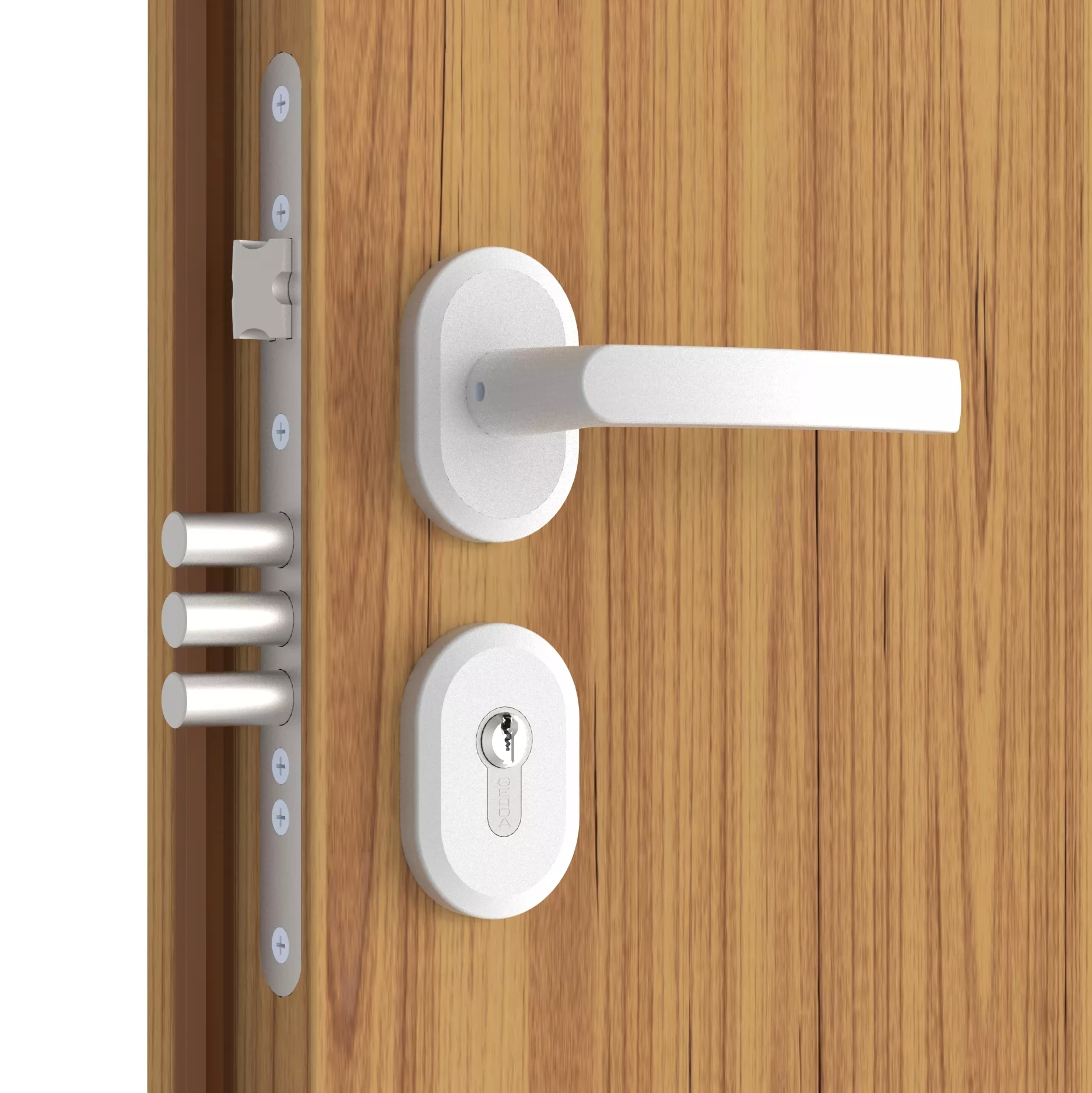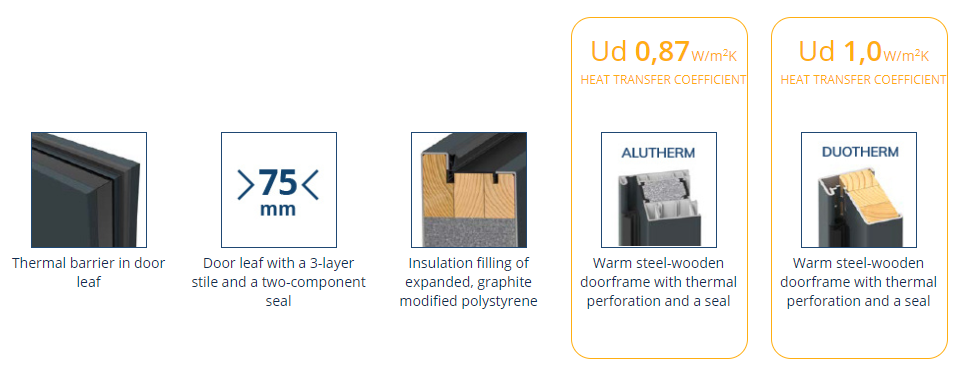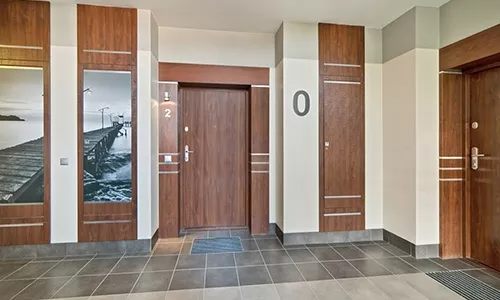Burglary resistance class, thermal and acoustic insulation. How to interpret entry door parameters?
When choosing entry doors, pay attention to some key parameters that reflect their features. Doors aren’t an everyday purchase, hence few people can understand the symbols and numbers describing the burglary resistance, heat permeation or acoustic insulation of the doors. Keep in mind that these parameters should be supported by relevant certificates. This article describes in simple terms the most important issues related to entry doors for use in residential houses and apartments.

In this article, we focus on 3 most important parameters of the doors that are currently manufactured and available on the market, namely burglary resistance specification and thermal and acoustic insulation. They are the most important functions of entrance doors that make sure that residents can enjoy safety, warm and calm.
Burglary resistance

Entrance doors, both those used in houses and apartments, may provide various levels of security. All doors manufactured by GERDA are structurally reinforced, feature solutions that make it harder to break down or destroy the doors, and are equipped with certified locks and lock cylinders. Until recently, the burglary resistance class of a door was determined in accordance with a Polish standard – doors could be rated as class A, B or C burglar resistant. Nowadays, doors are rated 1 to 6 based on the European standard PN-EN 1626:2017 currently applicable in Poland. However, in order to confirm these performance parameters, doors must undergo specialised tests and examinations which, if passed successfully, result in granting the door a suitable approval or certificate. Such documents are issued by accredited certification bodies, such as the Institute of Precision Mechanics (Instytut Mechaniki Precyzyjnej, IMP) or Institute of Construction Technology (Instytut Techniki Budowlanej, ITB). GERDA doors received such approvals and certificates, which are available for download in the Downloads/Certificates tab: Download/Certyficate.
The table below contains an explanation of each class. It’s worth noting that tools required to force open class RC2 doors include pliers, hammer, crowbar, and handsaw. Burglars trying to force open an RC3 or RC4 category door must be willing to devote a lot of time to their activities and ready to make a lot of noise. RC5 and RC6 doors are used in banks, safes or institutions that store important documents.
| Door class | Resistance time | Resistance |
| RC1 | – | Resists attempts to force open the door using physical force – by kicking the door, ramming it with one’s shoulder, lifting it or tearing it off the hinges using no tools whatsoever |
| RC2 | at least 3 minutes | Resists attempts to force the door using simple tools, such as screwdrivers, pliers, wedges, hammers |
| RC3 | min. 5 minutes | The burglar attempts to force the door open using heavier tools and an additional screwdriver and crowbar |
| RC4 | min. 10 minutes | The burglar uses power tools, hammer, axe, chisel, crowbar to force open the door. |
| RC5 | min. 15 minutes | To force open the door, the burglar uses power tools, such as a power drill, multi-saw, angle grinder with a disc with a diameter of up to 125 mm. |
| RC6 | min. 20 minutes | The burglar uses high-powered power tools, including an angle grinder with a disc with a diameter of up to 230 mm |
Thermal insulation – warm house

Thermal insulation makes for a warm house Styrofoam or polyurethane foam are usually used to insulate doors. The thickness of the door leaf, design of the door frame and correct installation of the door are of significant importance in this regard. The heat permeation ratio, marked using the Ud symbol, determines how well the door protects the interior from cold. The lower the ratio, the better, as it means that less heat escapes the interior of the house or apartment. For example, doors model GERDA NTT REVO 75 have a permeation ratio of 0.77 W/m2K to 0.93 W/m2K, depending on the door frame variant used. W/m2k means watt per square metre times kelvin.
1W/m2K means that over the course of one hour, given a temperature difference of 1 degree kelvin (1 degree kelvin = 1 degree Celsius), approximately 1 watt will escape through 1m2 of the surface of the door (assuming that the surface of the door is 2 m2, 2 watts of heat will escape), i.e. the same amount consumed by a lightbulb of the same power over the course of 60 minutes. It’s easy to calculate that when the temperature of the interior is 20 degrees, while the temperature on the inside is 0 degrees, over the course of one hour, 40 W worth of heat will escape through the door (Qs = 1.0*2.0*(20-0) = 40W). It’s therefore worth paying particular attention to this parameter, particularly when buying entrance doors to a house, as doors with a low permeability ratio will generate significant savings in the form of lower heating bills.


Remember that doors will retain their factory parameters provided that they are installed in the correct way, in accordance with the manufacturer’s guidelines. To ensure that installations are performed properly, Gerda’s Academy was opened, providing training courses to installers from across Poland. Training courses organised available at the Academy are meant to convey thorough knowledge on the design and professional installation methods of GERDA products. We encourage our customers to solicit the services of professionals who completed such training courses and were awarded a certificate. The list of such professionals is available at www.akademiagerda.pl.
Priceless quiet or thermal insulation

The house feels safe and warm, now it’s time to ensure acoustic comfort as well, so that as little noise as possible can reach the interior. According to current standards, reduction of noise by 10 dB is equivalent to a reduction of approximately 40 to 50%. The noise insulation ration, Rw, is expressed in dB (decibels). In contrast to heat permeation ration, the higher the value of the Rw factor, the higher the door’s acoustic insulation level. For example, our GERDA S PREMIUM apartment doors have an Rw acoustic insulation ratio of 43 dB. How to interpret this parameter? If noise at 80 dB is produced outside our apartment (this level of noise corresponds to loud music or the sound of a car horn), it will be reduced by 43 dB to 37 dB, i.e. the level of a normal conversation. The noise level recommended by WHO (World Health Organisation) in the environment during daytime is 50 dB.

Apartment doors should significantly dampen noises coming from the stairwell, ensuring that we can enjoy acoustic comfort despite living a block of flats. It’s therefore worth remembering that doors to apartments located in blocks of flats should have an Rw ratio of at least 30 dB. Another interesting fact is that every 3 dB leads to twice the reduction in noice.
Additional information on the topic is available in our sales outlets, find your nearest GERDA outlet in the Networking Sales tab.